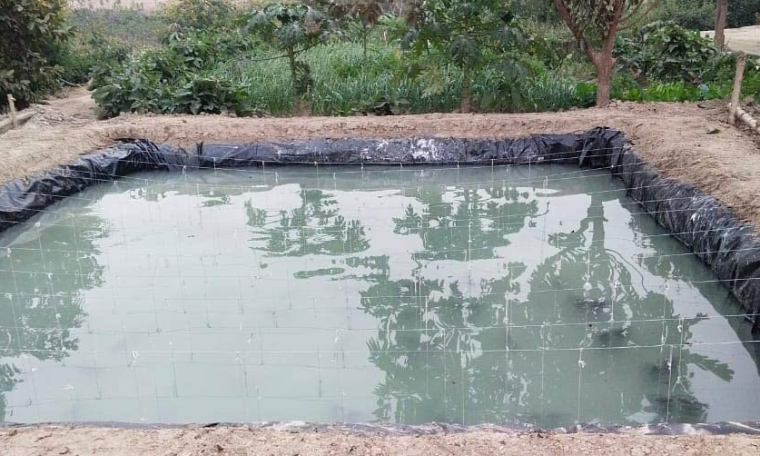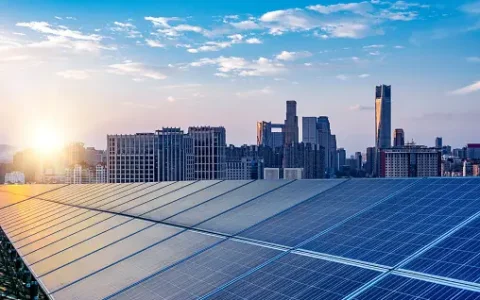
In the realm of water management, Pond Lining Sheets stand as silent guardians, ensuring the integrity and sustainability of water containment structures. From aquaculture to irrigation reservoirs, these sheets play a pivotal role in preserving water resources and protecting the environment. In this exploration, we delve into the art and science behind Pond Lining Sheets, unraveling their applications, advantages, and the key considerations for choosing the right material.
Understanding Pond Lining Sheets
The Essence of Pond Lining
Pond Lining Sheets, also known as geomembranes, are impermeable membranes used to line ponds, reservoirs, and other water containment structures. Crafted from materials like High-Density Polyethylene (HDPE), Polyvinyl Chloride (PVC), or Ethylene Propylene Diene Monomer (EPDM), these sheets create a watertight barrier, preventing seepage and ensuring efficient water storage.
Advantages of Pond Lining Sheets
Leak Prevention and Water Conservation
The primary function of Pond Lining Sheets is to prevent leaks and seepage, thereby conserving water. Whether in agricultural irrigation ponds or aquaculture facilities, these impermeable membranes ensure that water is retained, optimizing its usage and minimizing losses.
Environmental Protection
Pond Lining Sheets contribute to environmental protection by preventing water seepage that could lead to soil erosion and contamination. This safeguards nearby ecosystems from potential harm and ensures the responsible management of water resources.
Longevity and Durability
Quality Pond Lining Sheets exhibit exceptional durability and longevity. Resistant to UV radiation, chemicals, and abrasion, these sheets withstand the rigors of different environments, providing a reliable and long-lasting solution for water containment.
Applications of Pond Lining Sheets
Aquaculture Ponds
In aquaculture, maintaining water quality is paramount. Pond Lining Sheets create a secure barrier, preventing the leaching of harmful substances into the water. This ensures a controlled and healthy environment for fish and other aquatic life.
Agricultural Irrigation Reservoirs
Farmers rely on Pond Lining Sheets to line irrigation reservoirs, preventing water seepage into the soil. This not only conserves water but also allows for efficient irrigation practices, contributing to sustainable agriculture.
Landfill Leachate Containment
Pond Lining Sheets play a crucial role in containing leachate in landfills. By preventing the infiltration of contaminants into the surrounding soil and groundwater, these sheets contribute to environmentally responsible waste management.
Choosing the Right Pond Lining Material
HDPE Pond Liners for Versatility
High-Density Polyethylene (HDPE) Pond Liners are widely chosen for their versatility and durability. They exhibit excellent chemical resistance and flexibility, making them suitable for various applications, from aquaculture ponds to industrial reservoirs.
PVC Pond Liners for Cost-Effectiveness
Polyvinyl Chloride (PVC) Pond Liners offer a cost-effective solution without compromising on performance. They are known for their puncture resistance and ease of installation, making them a popular choice for smaller ponds and landscaping projects.
EPDM Pond Liners for Flexibility
Ethylene Propylene Diene Monomer (EPDM) Pond Liners are highly flexible and conformable, making them ideal for irregularly shaped ponds or those with varying contours. They are resistant to UV radiation and ozone, ensuring durability in outdoor applications.
Installation and Maintenance Considerations
Professional Installation for Optimal Performance
Ensuring proper installation by experienced professionals is crucial for the optimal performance of Pond Lining Sheets. This includes proper preparation of the substrate, meticulous seam on site welding cleveland, and attention to detail during the installation process.
Routine Inspection and Maintenance
Regular inspection and maintenance are essential to identify and address potential issues promptly. This includes checking for damage, monitoring seams and joints, and ensuring that the Pond Lining Sheets remain in good condition throughout their service life.
Reinventing Water Containment with Advanced Materials
Reinforced Polyethylene for Enhanced Strength
The evolution of Pond Lining Sheets has introduced reinforced polyethylene options that offer enhanced tensile strength and tear resistance. These advanced materials are particularly beneficial in applications where robust durability is paramount, such as in large-scale reservoirs or industrial water storage facilities.
Flexible Composite Liners for Versatility
Composite Pond Lining Sheets, combining materials like HDPE with geotextiles or other reinforcing elements, offer a unique blend of flexibility and strength. These flexible composite liners adapt well to uneven surfaces, making them ideal for pond lining in challenging terrains and irregular landscapes.
Innovations in Installation Techniques
Geosynthetic Clay Liners for Improved Sealing
Geosynthetic clay liners, a hybrid of geotextiles and sodium bentonite clay, introduce an innovative approach to sealing pond bottoms. The swelling properties of the bentonite clay enhance the impermeability of the liner, providing an effective barrier against water seepage.
Tensioned Geomembrane Systems for Large-Scale Applications
In large-scale water containment projects, tensioned geomembrane systems have emerged as a groundbreaking installation technique. This method involves pre-stressing the Pond Lining Sheets, ensuring a taut and uniform surface. The result is increased stability and resistance to external forces, making it suitable for expansive reservoirs and industrial ponds.
Sustainable Pond Lining Solutions
Recycled and Biodegradable Materials
The growing emphasis on sustainability has prompted the development of Pond Lining Sheets crafted from recycled materials. Additionally, researchers are exploring the integration of biodegradable materials, ensuring that at the end of their service life, these liners leave a minimal environmental footprint.
Rainwater Harvesting Integration
Pond Lining Sheets are increasingly being incorporated into rainwater harvesting systems. These liners create a watertight reservoir for collected rainwater, optimizing storage capacity and minimizing evaporation losses. This sustainable practice aligns with water conservation efforts in agriculture and landscaping.
Cutting-Edge Monitoring and Maintenance
IoT-Enabled Monitoring Systems
The future of Pond Lining Sheets includes the integration of Internet of Things (IoT) technologies. IoT-enabled sensors can monitor factors such as water levels, temperature, and structural integrity in real-time. This proactive approach allows for swift responses to potential issues, ensuring the longevity and performance of the pond lining system.
Drones for Aerial Inspections
Aerial inspections using drones have become a valuable tool in assessing the condition of Pond Lining Sheets. Drones equipped with cameras and sensors can efficiently survey large areas, providing high-resolution images and data for thorough inspections without the need for extensive manual labor.
Regulatory Compliance and Certification
Meeting Industry Standards for Reliability
As the importance of Pond Lining Sheets in water management becomes more recognized, adherence to industry standards and certifications is crucial. Manufacturers and installers are increasingly ensuring that their products meet regulatory requirements, providing users with confidence in the reliability and performance of Pond Lining Systems.
In Conclusion
Pond Lining Sheets stand as essential components in water management, offering a reliable solution for containing and preserving water resources. Whether in aquaculture, agriculture, or waste management, these impermeable membranes contribute to sustainable practices and environmental protection. Choosing the right material and ensuring proper installation and maintenance are key to unlocking the full potential of Pond Lining Sheets.



